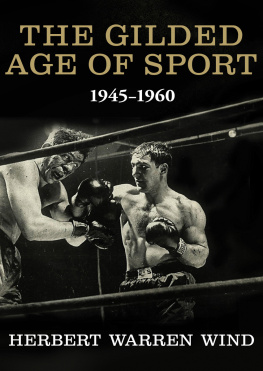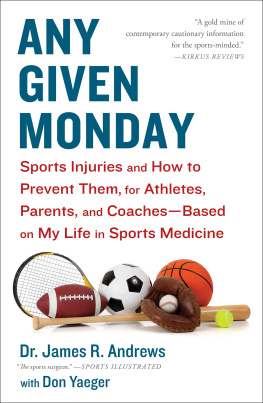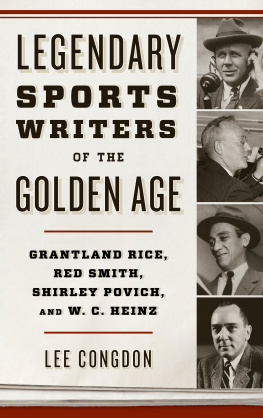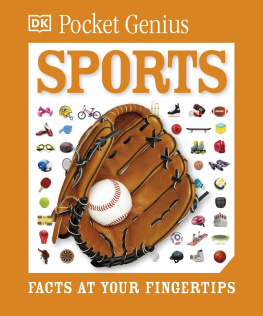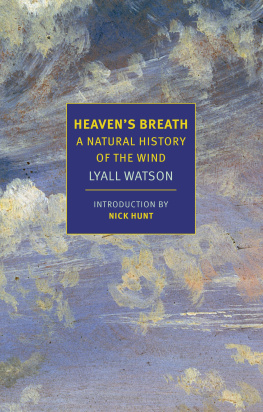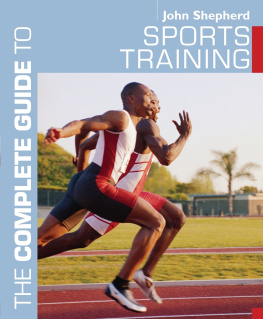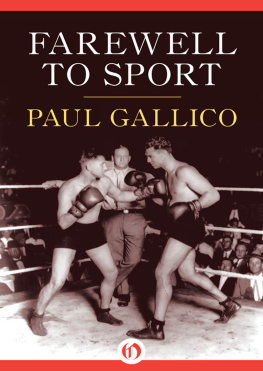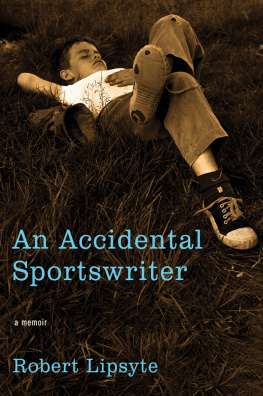The Gilded Age of Sport
19451960
Herbert Warren Wind

PREFACE
When sports historians get around to writing their books about the fifteen years following World War IIand I would imagine that even now a few are in the process of collating their old notes on such half-forgotten luminaries as Billy Cox, Chuck Davey, Billy Vessels, Shirley Fry, Gene Bearden, Mal Whitfield, Mac Speedie, Fanny Blankers-Koen, Sam Urzetta, Gretchen Fraser, and Bevo Francis (who once scored over a hundred points in a basketball game)they will probably be at wide variance in selecting an over-all name to designate the era. Those in tempo with the calculated romantics of Madison Avenue, for whom the beat must always be up-up-up, will deplore the fact that such a lustrous image as The Golden Age of American Sport has alreadyand properlybeen bequeathed to another period, the decade of the Twenties. Since no other mineral or precious stone readily connotes a superiority to gold, this group may have to settle for The Real Golden Age or The Second Golden Age. In some ways this would not be wrong, either. While its spirit was neither as simple nor as soaring, the stretch of years between 1945 and 1960 certainly produced athletic virtuosos comparable to Ruth, Jones, Dempsey, Tilden, Weissmuller, Grange, Paddock, and other heroes of the Twenties. And financially, of course, it was far more golden.
Other historians, listening to a different drum and viewing the period somewhat more dourly, will be tempted to call it something less indicative of solid value, perhaps The Chrome Age. Indeed, purposeful excesses and applied glitter frequently carried the day, and as sport became bigger and bigger business, quite often the heart went out of things when the veneer of Big Sport went over them. (This past autumn we were offered a literally stunning example of the spirit of the age when the New York Yankees, in what surely must be a new low freezing point in that organizations warmhearted reverence for baseball, dismissed Casey Stengel on the grounds that at seventy he was too old for the job of manager. This was an opinion that no one else in baseball had arrived at while watching Casey whip his team down the stretch to fifteen consecutive victories and the pennant, perhaps his finest bit of managing over the dozen years in which the old maneuverer led the Yankees to ten pennants and seven World Series championships.) However, to characterize the whole period that cynically would be to distort its character. Neither the best of times nor the worst of times, it was a complicated compound of many distressing and many inspiriting elements. It was the age of the professional. It was the age of the specialist. Above all, as future chroniclers will surely note, it was an age of enormous expansion which not only brought about a dramatic revival and extension of international competitions but also ushered in at home a new concept of sports for everyone, what with the shorter working hours, the easier transportation, and, above all, the advent of television, the greatest boon for the sports fan since the discovery of movable type. The only danger, perhaps, is that if the predicted day arrives when each of us has at home a color television set with a screen the size of a wall, carrying sports events originated on all continents, we may never get outdoors again.
These ruminations on the general state of sport are one of the by-products of the happy task I have been bending to in recent weeks: assembling for this book a number of the magazine articles on sports and sports personalities that it was my pleasure and assignment to write between 1945 and 1960. The articles are arranged in three sections. The first is made up of two fairly lengthy studies of sport in Japan and in Australia, dealing in the first article with the factors behind Japans surprising but utterly genuine orientation toward western sports, and in the second with a continent so young that it has yet to evolve a true culture of its own but has established itself as the most sports-minded nation the world has ever seen. (This, on second thought, may be the path of Australian culture.) The second section contains studies of six remarkable athletes of the period: Bob Cousy, the greatest of all basketball players, a thoroughgoing genius at his game; Maurice Richard, The Rocket of Les Canadiens, the most prolific scorer in the history of hockey and as intent, embroiled, and hopelessly magnetic a performer as any sport has ever produced; Ben Hogan and Sam Snead, who are presented jointly, the latter the ablest golfer who has never won our National Open Championship, the former an outright wonder, as peerless in his period as Bobby Jones and Harry Vardon were in theirs; Yogi Berra, possibly the last of baseballs wonderful characters and quite possibly, too, one of the last members of that almost extinct race, natures noblemen; and Pee Wee Reese, over a span of nineteen years the Brooklyn Dodgers shortstop and, for many of us, the personification in this age, as Jones was in the Twenties, of the ideal American athlete. The third section is a gallimaufry of eight pieces of assorted types: an essay on golf; a close-up of Al Barlick, the National League umpire; a profile of the Queen Mother of Tennis, Hazel Hotchkiss Wightman; a brief look at Gussie Moran, tenniss gift to lingerie, or the other way around; a short visit to the Royal Calcutta Golf Club; a rather involved portrait of St. Andrews, the cradle of golf; an investigation of that perennial star of the Harvard football season, the college band; and a reminiscence about the late James Michael Curley, an old friend.
Time moves so quickly, in sport as in every phase of life, that these pieces already have about them the patina of another day. Several of the subjects who were in their prime or not too far past it at the time the articles were writtenBerra and Hogan, for exampleare now nearing the close of their careers. Several others, such as Reese and Richard, are already in retirement. There would have been some advantages, granted, in rewriting the articles and bringing them up to date, but it was decided that it would probably be best in the long run to leave them as they were and to supply each with a short introduction sketching in, among other things, any significant data between the date of publication and the present. In a few cases, notably in the articles on Australia and on Mrs. Wightman, some new materialor, more precisely, original material which the limitations of magazine space made it necessary to omithas been included. Aside from this, however, only minuscule changes have been made. In addition to the central personalities named before, the articles offer glimpses of quite a number of the memorable figures of the postwar period (including Branch Rickey, John Landy, Jackie Robinson, Casey Stengel, Herb Elliott, the Konradses, and Joe DiMaggio), so while this collection cannot begin to approximate even an impressionistic history of sports over the past fifteen years, perhaps it will evoke some of the singular flavor and the temper of the times.
On the other hand, when the histories of that period are written, major attention will be given to many events, persons, and trends that are conspicuous by their absence in a collection of this kind. For instance, the closest these articles come to football is the story on the Harvard band, which is not close at all if you live south of Dedham. Furthermore, as far as the authentic champions go, there are, for example, only passing references to Ted Williams and none at all to Rocky Marciano, respectively the best left-handed hitter and the best right-handed hitter of the age. As a native of Brockton, Massachusetts, Marcianos home town, and by reason of the propinquity of Brockton to Boston a careful observer of Williams career in the majors since his debut in 1939, I would have very much enjoyed doing articles on them. For one reason or another, I never did. When you write for magazines, either as a contributor or as a member of the staff, it will frequently happen that way, of course. Sometimes the magazine has already run a story on that particular subject and other times you have all you can carry to complete your regular assignments on time. In any event, I would like to avail myself of this opportunity to make a few tangential remarks about Williams and Marciano that may clarify certain things about them.
Next page
